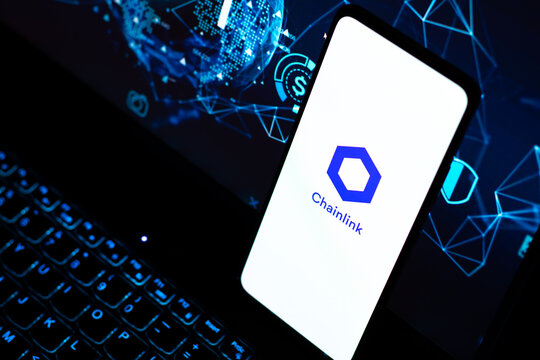OpenAI announced today that it is releasing a new family of artificial intelligence models optimized to excel at coding, as it ramps up efforts to fend off increasingly stiff competition from companies like Google and Anthropic. The models are available to developers through OpenAI’s application programming interface (API).
OpenAI is releasing three sizes of models: GPT 4.1, GPT 4.1 Mini, and GPT 4.1 Nano. Kevin Weil, chief product officer at OpenAI, said on a livestream that the new models are better than OpenAI’s most widely used model, GPT-4o, and better than its largest and most powerful model, GPT-4.5, in some ways.
GPT-4.1 scored 55 percent on SWE-Bench, a widely used benchmark for gauging the prowess of coding models. The score is several percentage points above that of other OpenAI models. The new models are “great at coding, they’re great at complex instruction following, they’re fantastic for building agents,” Weil said.
The capacity for AI models to write and edit code has improved significantly in recent months, enabling more automated ways of prototyping software and improving the abilities of so-called AI agents. Rivals like Anthropic and Google have both introduced models that are especially good at writing code.
The arrival of GPT-4.1 has been widely rumored for weeks. OpenAI apparently tested the model on some popular leaderboards under the pseudonym Alpha Quasar, sources say. Some users of the “stealth” model reported impressive coding abilities. “Quasar fixed all the open issues I had with other code genarated [sic] via llms’s which was incomplete,” one person wrote on Reddit.
All of the new models can analyze eight times more code at once, which improves their ability to make improvements and fix bugs. The new models are also better at following instructions given by users, reducing the need to repeat commands in different ways to get the desired result. OpenAI showed demos of GPT-4.1 building different apps including a flashcard app for language learning.
“Developers care a lot about coding, and we’ve been improving our model’s ability to write functional code,” Michelle Pokrass, who works on post-training at OpenAI, said during the Monday livestream. “We’ve been working on making it follow different formats and better explore repos, run unit tests, and write code that compiles.”
GPT-4.1 is 40 percent faster than GPT.4o, OpenAI’s most widely used model for developers. The cost of users inputting queries has been reduced by 80 percent in this latest version, OpenAI says.
On today’s livestream, Varun Mohan, CEO of Windsurf, a popular tool for AI coding, said that the company had been testing GPT-4.1 and found that the new model was “60 percent” better than GPT-4o according to its own benchmarks. “We found that GPT-4.1 has substantially fewer cases of degenerate behavior,” Mohan said, noting that the new model spends less time reading and editing irrelevant files by mistake.
Over the past couple of years, OpenAI has parlayed feverish interest in ChatGPT, a remarkable chatbot first unveiled in late 2022, into a growing business selling access to more advanced chatbots and AI models. In a TED interview last week, Altman said that OpenAI had 500 million weekly active users, and that usage was “growing very rapidly.”
OpenAI now offers a smorgasbord of different models with different capabilities and different pricing. The company’s largest and most powerful model, called GPT-4.5, was launched in February, though OpenAI called the launch a “research preview” because the product is still experimental.
The company also offers models called o1 and o3 that are capable of performing a simulated kind of reasoning, breaking a problem down into parts in order to solve it. These models also take longer to respond to queries and are more expensive for users.
ChatGPT’s success has inspired an army of imitators, and rival AI players have ramped up their investments in research in an effort to catch up to OpenAI in recent years. A report on the state of AI published by Stanford University this month found that models from Google and DeepSeek now have similar capabilities to models from OpenAI. It also showed a gaggle of other firms including Anthropic, Meta, and the French firm Mistral in close pursuit.
Oren Etzioni, a professor emeritus at the University of Washington who previously led the Allen Institute for AI (AI2), says it is unlikely that any single model or company will be dominant in the future. “We will see even more models over time as cost drops, open source increases, and specialized models win out in different arenas including biology, chip design, and more,” he says. Etzioni adds that he would like to see companies focus on reducing the cost and environmental impact of training powerful models in the years ahead.
OpenAI faces pressure to show that it can build a sustained and profitable business by selling access to its AI models to other companies. The company’s chief operating officer, Brad Lightcap, told CNBC in February that the company had more than 400 million weekly active users, a 30 percent increase from December 2024. But the company is still losing billions as it invests heavily in research and infrastructure. In January, OpenAI announced that it would create a new company called Stargate in collaboration with SoftBank, Oracle, and MGX. The group collectively promised to invest $500 billion in new AI data center infrastructure.
In recent weeks, OpenAI has teased a flurry of new models and features. Last week, Altman announced that ChatGPT would receive a memory upgrade allowing the chatbot to better remember and refer back to previous conversations. In late March, Altman announced that OpenAI plans to release an open-weight model, which developers will be able to download and modify for free, in the summer. The company said it would begin testing the model in the coming weeks. Open-weight models are already popular with researchers, developers, and startups because they can be tailored for different uses and are often cheaper to use.
This is a developing story. Please check back for updates.




